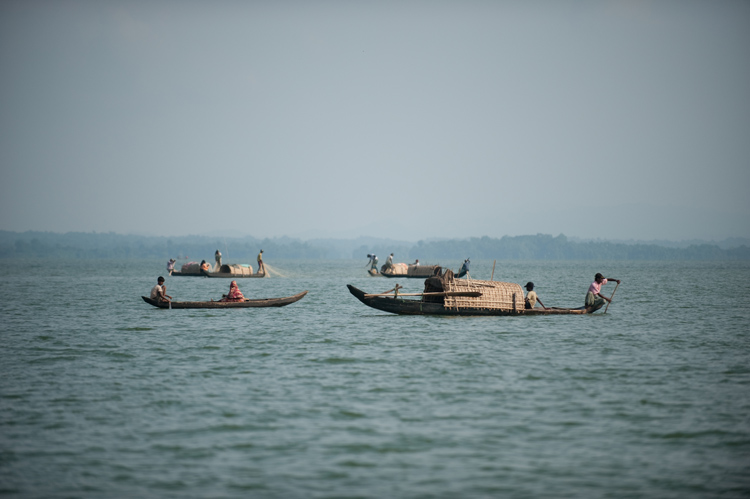
DHAKA, June 7, 2022 (BSS) - Bangladesh should apply satellite-based remote sensing techniques to explore the marine potential as it has already sent its first geostationary communication satellite 'Bangabandhu-1' to orbit, suggested an expert.
"Satellite-based remote sensing techniques could identify potential fishing zones, using indicators such as microscopic photosynthetic algae, subsurface temperature, salinity, weather, ocean currents and bathymetry," Kabir Uddin, GIS and Remote Sensing Specialist at the International Centre for Integrated Mountain Development (ICIMOD) told BSS.
He said fish tend to aggregate in ocean areas that exhibit conditions favoured by certain species.
Some of these relevant oceanographic conditions, such as sea surface temperature, ocean colour and oceanic fronts, which strongly influence natural fluctuations of fish stocks, can be observed and measured by satellite sensors, he said.
The GIS and remote sensing specialist said this remotely sensed data can be provided near real-time to help fishers save fuel and travel time during their fishing expeditions and also help modellers who put out fisheries forecasts.
This information can be provided to fishers at a small cost, he said, adding once the potential areas are identified using remote sensing, an SMS can be sent to fishing boat owners and agents, he added.
"This information could also be supplied to fishers out at sea. Bangabandhu-1 could potentially be used for regular communication on fishing hotspots and for communicating cyclone warnings," he said.
Kabir said it is heartening to know that the Bangabandhu-2 Earth Observation Satellite is in preparation.
"It could consider incorporating an image sensor on ocean parameters that would be effective in determining preferred habitat for feeding, breeding, maturation, and predator avoidance," he added.
However, the ICIMOD expert said, until the time that Bangabandhu-2 is in orbit, there is publicly available satellite technology on the marine environment that can provide valuable information regarding fish species and their interactions with the environment.
"This is technology that can be used to tap a blue economy opportunity for boosting economy and nutrition in Bangladesh," he added.
Kabir said satellite technology can also be used to map coastal morphological changes and land expansion.
"Himalayan rivers carry a high volume of sediment and deposit it across the Bay of Bengal in Bangladesh. This has caused significant changes in the morphology of the Bay, including the formation of islands," he said.
Bangladesh has excellent marine resources and one of the world's most productive marine ecosystems in the Bay of Bengal.
Exploitation and sustainable management of marine resources can contribute significantly to the national economy, Kabir added.
Among the marine resources, a significant portion of the direct benefits generated by marine and coastal ecosystems are in the form of fishery and aquatic resources, which generate livelihood opportunities in fishing, farming and the post-harvest economic sectors, he observed.
In Bangladesh, more than 80 percent of the animal protein in the diet comes from fish. However, marine fisheries make up only 16.28 percent of the national fish production.
Kabir said marine fisheries production is low in Bangladesh because fishers generally use traditional methods in catching fish.
"Most fishers access fishing grounds based on their experience, which cannot be considered an accurate method. On some days, they may land an outstanding catch, but on other days their catch is either half or one-fourth of that," he said.
A recent article published by the ICIMOD in Journal of Environmental Management reports that there was a net gain of around 20 sq km every year in the coastal area from 1989 to 2018. Long term planning approaches are needed to guide resettlement, restoration, conservation, and management of the ecosystems and their services across these newly formed areas in the northern Bay of Bengal.
"Here too, satellite-based mapping and monitoring are the best options," Kabir said.